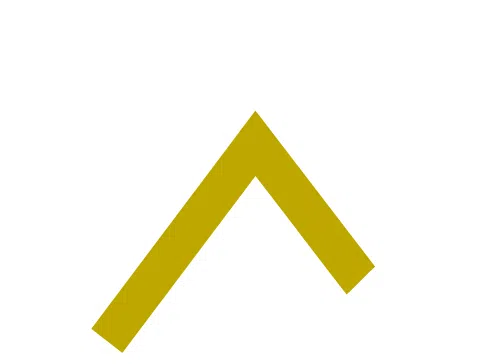The benefits of creating a diverse, equitable, and inclusive workplace culture are undeniable – companies with greater diversity in their staff and management teams out-perform those that don’t, achieve higher levels of profitability, and are more likely to have superior value creation. In fact, McKinsey’s “Diversity Matters Even More: The Case for Holistic Impact,” report analyzed 1,265 companies across 23 countries and six regions and found that both gender and ethnic diversity on executive teams individually increase the likelihood of financial outperformance by 39% compared to a decade ago.
The question is, how do you attract a diverse candidate pool? While there are many solutions to try, the simple answer starts with developing inclusive job descriptions and thinking carefully about where you post them. We recommend that our clients start by posting their job descriptions on reputable sites that are well known for their inclusivity and reach online, like Diversity and Career and DiversityJobs. After all, a job description does more than describe an open position; it’s an opportunity to communicate your organization’s values and culture, and how all candidates can thrive and succeed as part of your team. Ready to boost your Diversity, Equity and Inclusion (DEI) efforts and attract top talent? Here’s how to craft a job description that truly reflects your dedication, determination, and commitment to DEI:
Highlight your organization’s values and commitment to inclusion
Today, many companies are walking back from the DEI commitments made in 2020. In this context, a DEI statement is important to convey your organization’s stance on DEI (though a statement without action is irrelevant). Organizations should reflect their commitment to DEI across all communication channels including social media and through imagery on the website. This can help candidates understand the depth and sincerity of your commitment, as well as what they can expect from your overall company culture.
When writing your DEI statement, keep these tips in mind:
- Actively encourage diverse candidates to apply in your job description. For example: “Studies show that women and people from underrepresented groups often only apply to jobs if they meet 100% of the qualifications – yet few people ever meet every qualification. If that applies to you, [Organization] encourages you to break that statistic and apply.”
- Use clear, concise and inclusive language. Avoid jargon, overly complex descriptions, gendered terms, discriminatory phrases, idioms, inequitable requirements, and cultural references.
- Illustrate your organization’s commitment to DEI. For instance, perhaps you have mentorship programs, internal DEI committees, DEI staff training, etc.
- There are a lot more types of diversity than you might think. Be sure to consider as many as possible such as race, ethnicity, gender, sexual orientation, physical/mental ability, age, belief system or religion, socioeconomic status, nationality, political or union affiliation, geographic location, seniority/tenure, citizenship, family or relationship status, education, culture, generation, job function or department, salary or compensation level, appearance, interests, language, veteran status, etc.
Showcase your inclusive benefits
Salary transparency is a key component of equity in today’s job market and is required in many states. Including salary ranges goes a long way to establishing trust and your organization’s commitment to inclusion with candidates.
Additionally, benefits such as paid parental/caregiver leave, flexible work arrangements, child/elder care subsidies, personal days, wellness programs, etc., play an important role in supporting diversity, inclusion and belonging. Including these benefits in the job description means candidates will understand your commitment to inclusion from the very start. See how our company highlights our benefits to candidates.
Only list “preferred” qualifications in your job description
Rethinking—and simplifying—your candidate criteria is key to creating a more equitable job description and attracting a larger, more diverse pool of candidates. Reframe job descriptions to focus on skills over specific degrees, as not all qualified candidates may have had the same opportunities in life. A lengthy and specific list of requirements can discourage potential candidates from applying, especially those who possess transferable skills, but may lack a degree, “traditional”, direct and/or highly specific experience.
Double-check for personal and organizational bias
Using inclusive language is a simple—but effective—change you can make to your job descriptions to ensure inclusivity. For example, using ‘they’ instead of ‘he or she’ or ‘s/he’ to be more gender inclusive is found to increase applications by 42%.
Also, be cognizant of any language that suggests an age bias or discriminates against certain age groups, such as “young”, “digital native”, “recent college graduate”, “fresh out of college”, “looking for a career change”, “seasoned professional”, “overqualified”, “retired”, or “mature”. Include a sentence that clearly welcomes applicants of all ages.
Swap out jargon
Confusing terms, phrases, and jargon (i.e. undefined acronyms) in a job description can discourage applicants who might not be familiar with the terms or feel they don’t meet the requirements because of word choice.
Try some of these strategies to improve your job descriptions:
- Always define acronyms, even if you believe they might be obvious.
- Appeal to people of all ages by removing “junior” from titles, and using “entry-level” instead of “recent grad” for example.
- Be aware of terms with racial undertones or prejudice (such as “grandfathered-in” or “hard-working American”), and replace them with neutral language.
- Replace gendered terms or potentially gendered phrases with neutral alternatives. For example: replace anchorman/businessman with anchor or businessperson. Additionally, replace “male-coded” words with more neutral options, such as “strong” for “able,” “proven,” and “sound.”
- Be inclusive of all abilities by using words like “moves” instead of “walks” or “lifts”, “travel” instead of “drive,” and instead of “talks” use “communicates.”
Development Guild recognizes that diverse voices, perspectives, and experiences are required for the greatest impact, and we are committed to supporting and strengthening DEI industry-wide—through our work as nonprofit consultants—and internally as a firm. Learn more here.




